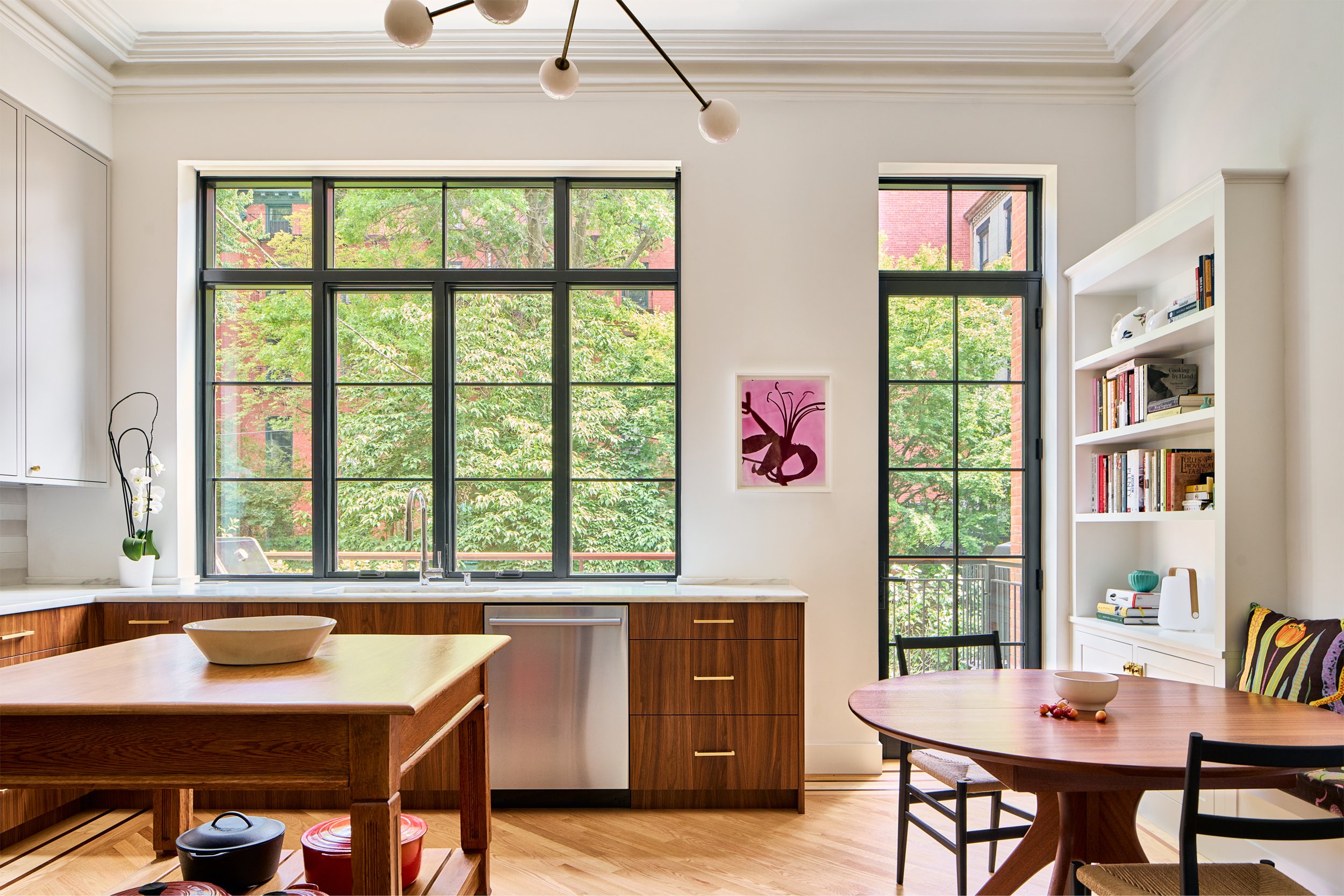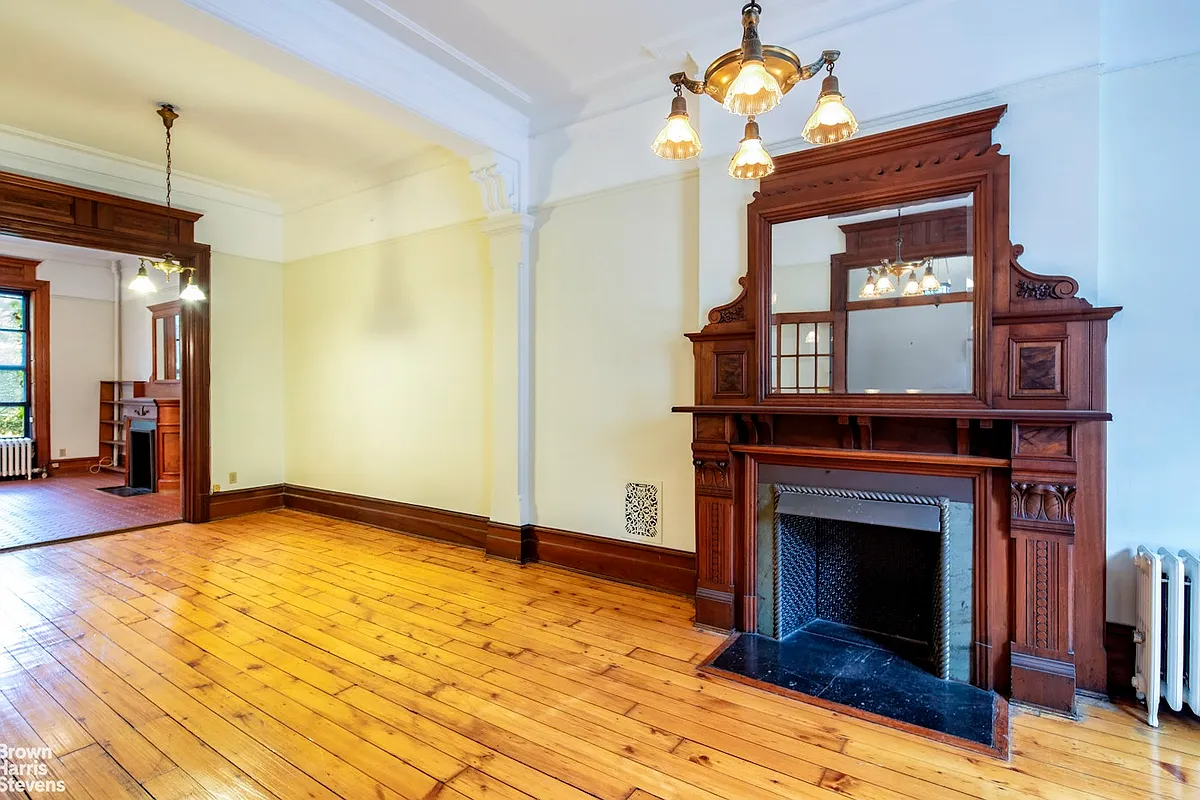Co-op of the Day: 35 Prospect Park West, #14A and 15A
Tough times at the top! This 11-room duplex at 35 Prospect Park West in Park Slope began its listing life in early 2008 with Stribling asking a cool $4,450,000. That didn’t happen, and Corcoran gave it a whirl later in the year at $4,125,000. Nada. So Brown Harris took the reins in March of this…


Tough times at the top! This 11-room duplex at 35 Prospect Park West in Park Slope began its listing life in early 2008 with Stribling asking a cool $4,450,000. That didn’t happen, and Corcoran gave it a whirl later in the year at $4,125,000. Nada. So Brown Harris took the reins in March of this year with the same asking price. In May, the ask was trimmed to $3,900,000 where it remains today. Still nothing. What’s it gonna take to move this 4,400-square-foot blue chip?
35 Prospect Park West [35 Prospect Park West, #14A and 15A] GMAP P*Shark
Co-op of the Day: 35 Prospect Park West [Brownstoner]





Yes, but if the boards actually do not have the legal obligation to disclose their reasons (though I imagine that must be periodically challenged in the courts), it must be pretty hard to enforce federal (or state) fair housing laws.
Nomi, of course what I meant to write is that boards, landlords or agents can’t discriminate in selling or leasing apartments in NYC, whether coops, condos or rentals.
Good night.
Ah, OK. I know they don’t have to give a reason, so I assumed. But I should have looked it up before writing that.
Minard,
I’ll quote you for your own benefit. And from today’s Brownstoner, September 28, 2009 at 1.42 pm in the Slope synagogue thread:
“My goodness, if anyone has been involved in the real estate or architecture business in New York City for longer than ten minutes they know about which are the Jewish buildings and which are the Gentile buildings and which are the buildings with the rich Catholic families, etc etc. Same with private clubs. It’s not the sort of thing that is enforced by law, it is enforced by human mores, for better or worse.
Twenty years ago the racial boundaries in Brooklyn were as hard as those in Johanesburg. Apartheid was not a state law but it may as well been.
Are you all that young?”
That’s your quote, in its entirety, which sets the general context for my personal experiences, those of my friends and visitors, and those of people confronted by discrimination at New York cooperatives as reported in the Times.
And Nomi:
It’s not cooperative boards’ right to discriminate by race, gender, religion or sexual orientation in New York City housing, whether it’s a condo in Park Slope or a cooperative on Fifth Avenue or a rental unit in Flushing.
It’s against the law.
Not that agents won’t steer people away from certain buildings to avoid conflicts. That’s against the law, too.
Know your rights. You may some day have reason to want to use them. 🙂
But, ML, NOP is TALKING about high end coops. Why not get info from what you’re calling the “NY Times Park Avenue bureau”?
I’m a conservative. I find most political correctness tiresome at best. But it’s no secret that SOME coop boards are extremely exclusive and often reject people for their race or ethnicity alone. This is their right, but it’s not pretty.
Oh NOP, give it up. That is baloney. What you describe are your personal problems, don’t project them on the busy, successful people volunteering on their co-op boards. If you are getting your info from the NY Times Park Avenue bureau you should stop wasting your time and join the real world.
Nokilissa, wow, didn’t expect a response from someone who’d read the book! I feel bad that I’d forgotten about the little girls. I read it a few years ago. I’m aware of MacDonald’s claims that McGinniss wrote a fictional story, though I’ve never doubted its veracity myself. He did, tho, I’m sure, mislead MacDonald about his intentions. He had to have. Though . . . . I have some vague memory that he DID go into it not sure whether MacDonald was guilty or not. Anyway, that one stayed with me for a long time.
Minard Lafever:
As to the co-op review process working “super well” for “real folks” that depends on your definition of real folks.
For real folks outside the co-op’s social profile it doesn’t.
For people of color it doesn’t.
And even for rich gays, it sometimes doesn’t.
Just read the New York Times to learn about blacks who’ve been “politely” shown the door; Asians and South Asians bringing suits against co-op boards; and the occasional “social” gay who can’t get into Sutton Place.
And discrimination isn’t limited to the Upper East Side but can be found in middle-class precincts in Queens. (Again, read the New York Times.)
I have rich friends who’ve moved to New York from India who’ve passed on the indignity of appearing in front of another co-op board, opting for a multi-million dollar condominium and paying a 30% premium over the cost of a comparable co-op. (Why do you think condominiums are more expensive than all but the very best co-ops? Because in many cases they’re less “exclusive,” the transaction direct between buyer and seller — without intrusive boards — making them more valuable on the open market.)
Just recently, Indian guests of mine from London were shown the service elevator by the doorman at my Park Avenue building! I let him have it, believe me, but his behavior is so culturally ingrained that he was less upset than bemused by my response. (His look was quizzical, not ashamed, as in, is there really a problem about this?)
Yikes!
mimmin, you’re right, and that right of first refusal comes in handy when a unit is being foreclosed by a bank but otherwise it is usually just yes or no -in terms of the potential buyers. And I’ll let you into a little secret, realtors know what boards like and don’t like. They don’t like wasting their valuable time. When a good realtor matches a coop up with a buyer, it is almost always, really, almost always, a win-win. The stories about Madona being rejected from a CPW co-op or Nixon being rejected from a Fifth Avenue co-op is merely the stuff of celebrity legend. For real folks the process works super well.